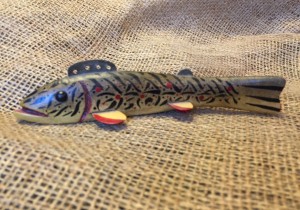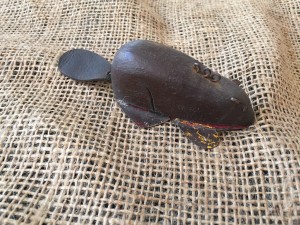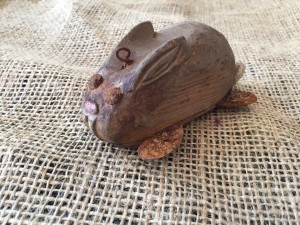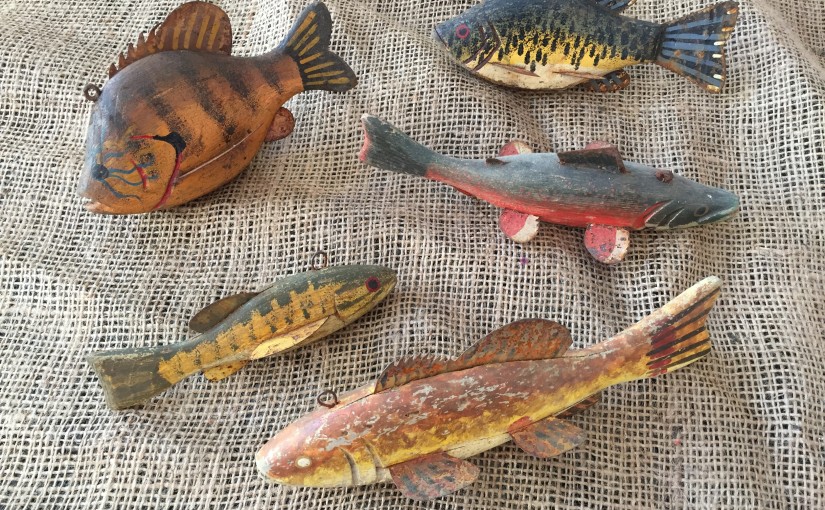Spearing fish through the ice is not a common practice in most of the US. In fact, in many places it would be illegal and/or impossible to try. For those unfamiliar with the process, here are the basics. The sport takes place inside an ice shanty or darkhouse. The darkness affords a clear view beneath the ice. A large hole is cut in the ice – much larger than a little, round tip-up hole. The decoy is a hookless lure suspended through the hole to attract predatory fish within range of a spear. Although I’ve never done it myself, I’d imagine the decoy also helps gage distance and size of the fish. When suitable quarry, usually a large pike, comes within range, it is harvested with the thrust of a spear.

The spearing process is interesting, but that’s only half of the story. The other half is the artistry and craftsmanship. Handcarved from wood and heavily weighted with lead, each “fish” is carefully crafted for the correct balance and appearance to attract predators beneath the ice. Some are made by fishermen who carve, some by artists who fish, and some come from craftsmen inbetween. No matter the origin, each is an expression of creativity and ingenuity.

Decoys made by noted carvers may fetch hundreds or even thousands of dollars from collectors, but that is not the best measurement of value. The true value lies where form and function are partners, and is measured on a sliding scale of satisfaction rather than dollars and cents. That satisfaction can be reaped by the the fisherman, the collector, or the carver himself.

